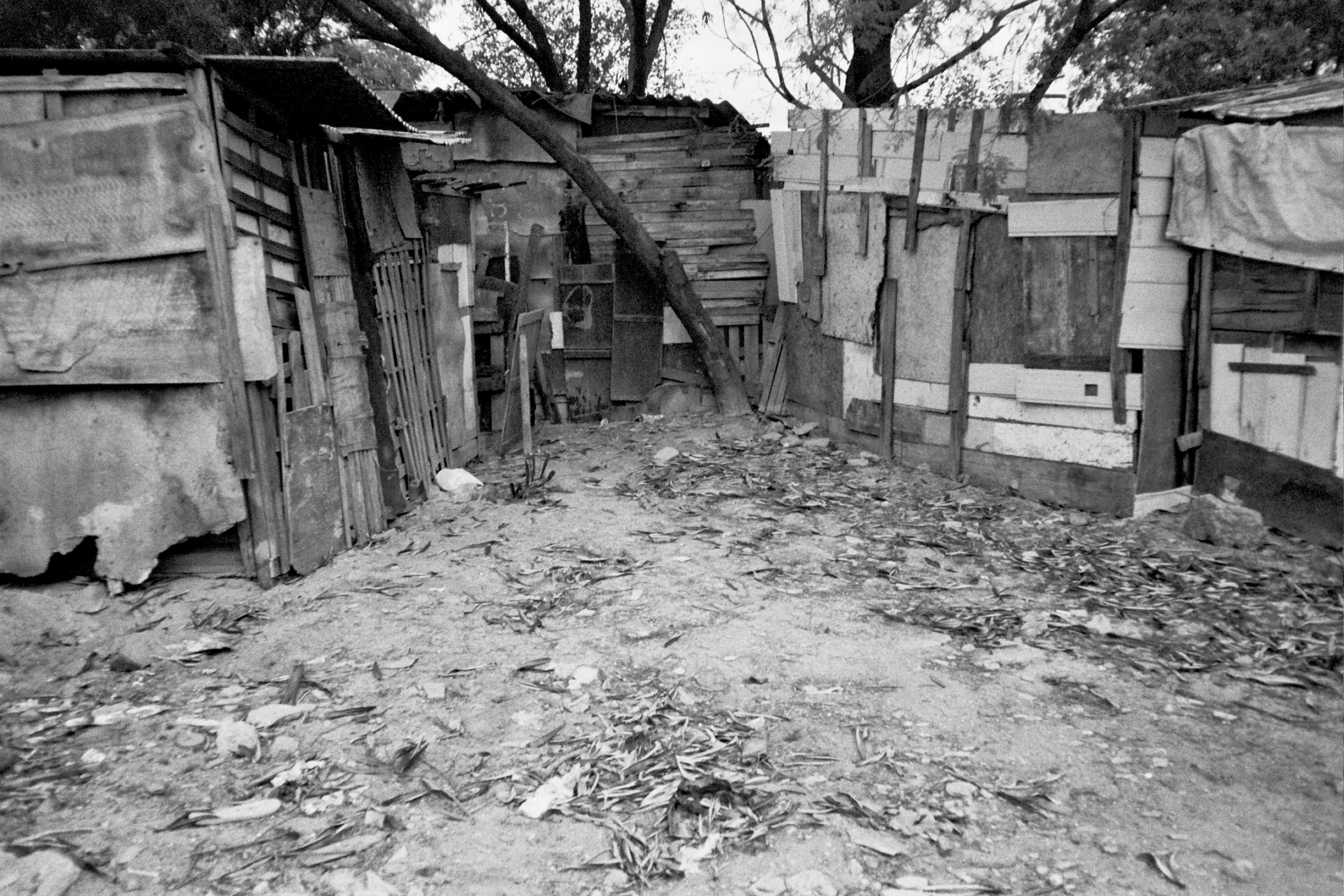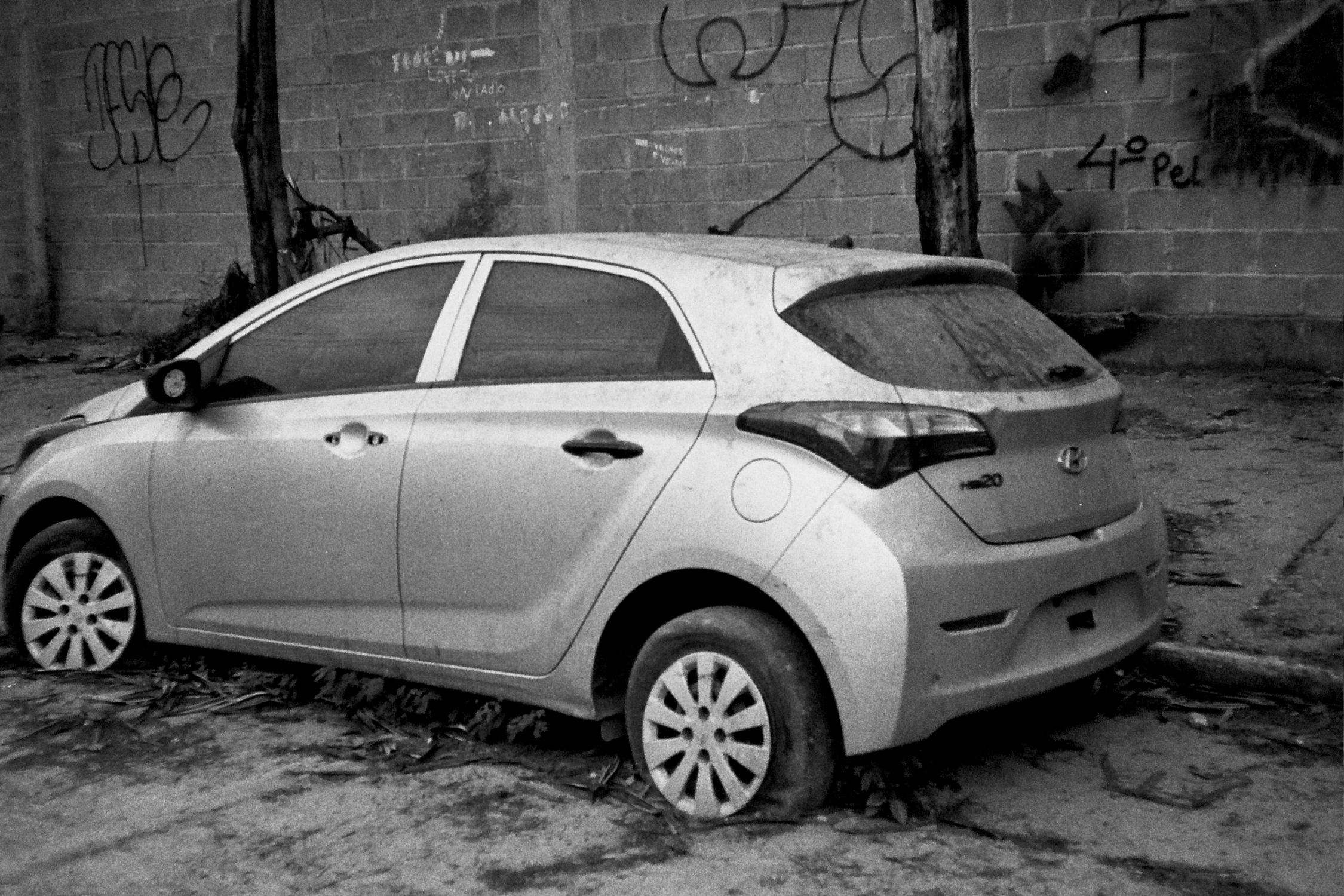“Na Moita” is slang in Rio de Janeiro, Brazil, for an action that cannot be carried out in the open. It literally translates to “in the bush,” and it is normally associated with delinquent activity, but also with anything unusual.
In the Baixada Fluminense – that is, the northern, most populous area of the Greater Metropolitan Area of Rio de Janeiro – life is often times at odds with city planning and other abstract notions, such as laws.
“Morar” is a Portuguese verb rich in connotations–it can mean “to reside,” “to abide,” “to live,” “to settle,” and “to occupy,” depending on the context–and it captures essentially the status of the inhabitants, or “moradores,” of these communities: some occupy, some others reside, few abide by the rules, and all live together thanks to interim agreements amongst themselves. For example, such is the case with the drug-dealing gangs that fuel the relentless confrontations with police, which have ended in blockades made of unused furniture.
Along with some students and staff from The New School in New York, I visited the Parque das Missões and Vila Beira Mar, two of the most prominent examples of slum habitation in Rio, according to local NGO Teto (which is known throughout Spanish-speaking Latin America as “Un Techo para mi País,” a Chilean transnational organization that mobilizes young volunteers to fight poverty).








Teto was there to accompany us throughout all the process. By association, people in the communities did not question much the fact that we were taking pictures, since the organization would always send media teams to document their housing intervention projects.
The living conditions were dire, electricity would disappear every time it rained, and the clogged drainage would cause major floods, not to mention serious sanitation issues. However forsaken the community seemed to our group, each individual that we spoke to was perfectly content with their community and the strong ties that bind it together: It was a settlement (or “assentamento,” which, in its etymology, signals to an agreement) that they all had created in the face of pressing difficulties. Needless to say, most assentamentos do not have a housing permit from the local prefecture.
Perhaps more importantly, community members also spoke of how dependent they were of “Bolsa Família.” This social welfare program was perhaps the centerpiece of the Lula administration, also part of the larger Fome Zero federal assistance program. It reduced poverty by 27.7% from 2006 to 2011, and is often described as the most impactful program of its kind in the world. It is now under threat by the large scale protests and court challenges against the Worker’s Party (Partido dos Trabalhadores) government.
Without Bolsa Família, the lives of the people of these neighborhoods would dire, and they would maybe be confronted with other decisions to be taken “na moita.”
These photographs, below, taken with a manual focus analog compact camera in black and white celluloid (a lot of focus hunting went on), are themselves as makeshift as the structures and situations that they intend to document; they portray the precarious material conditions and the way inhabitants bypass implicit or explicit norms to adjust to the ever shifting social dynamics, urban environments.








